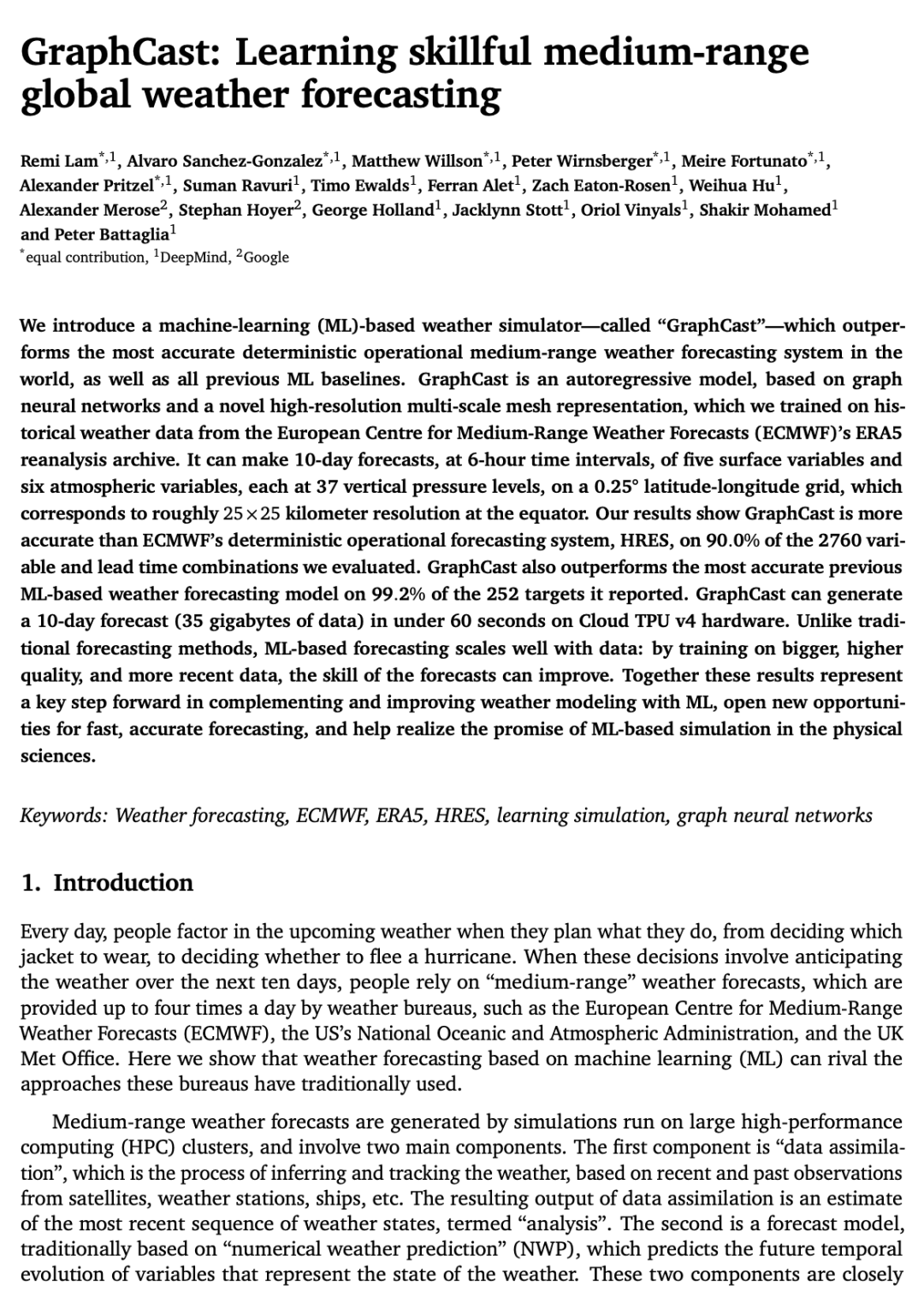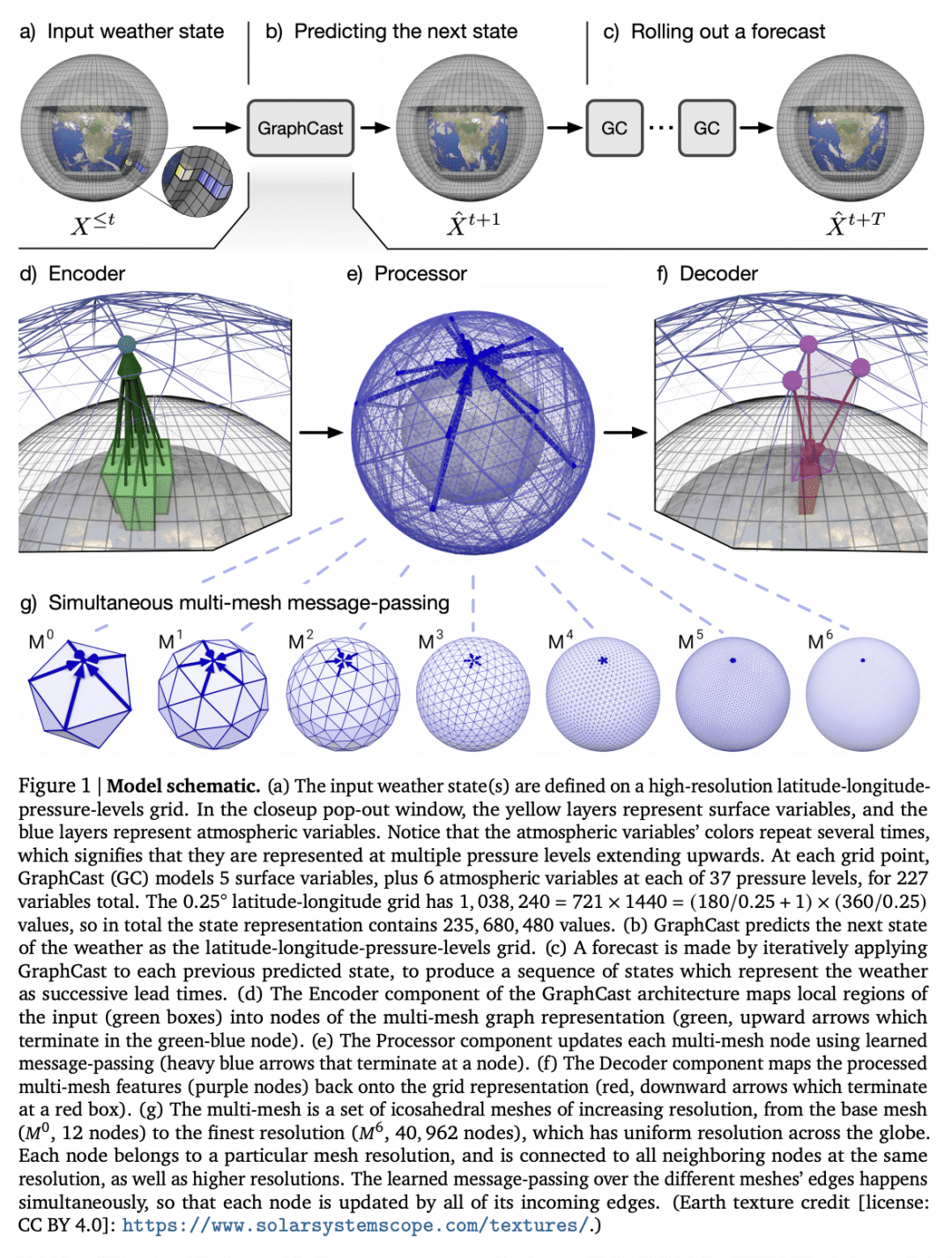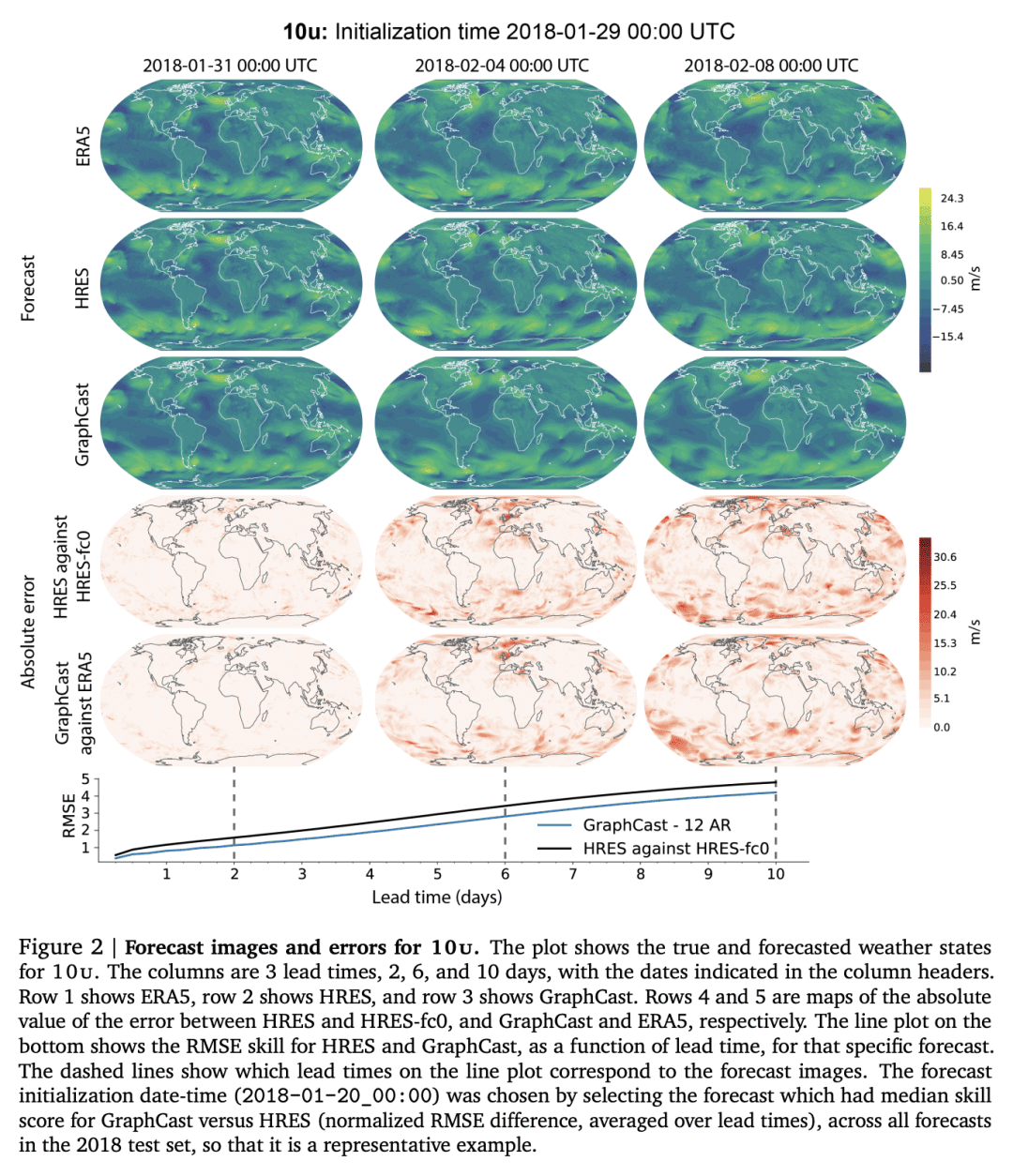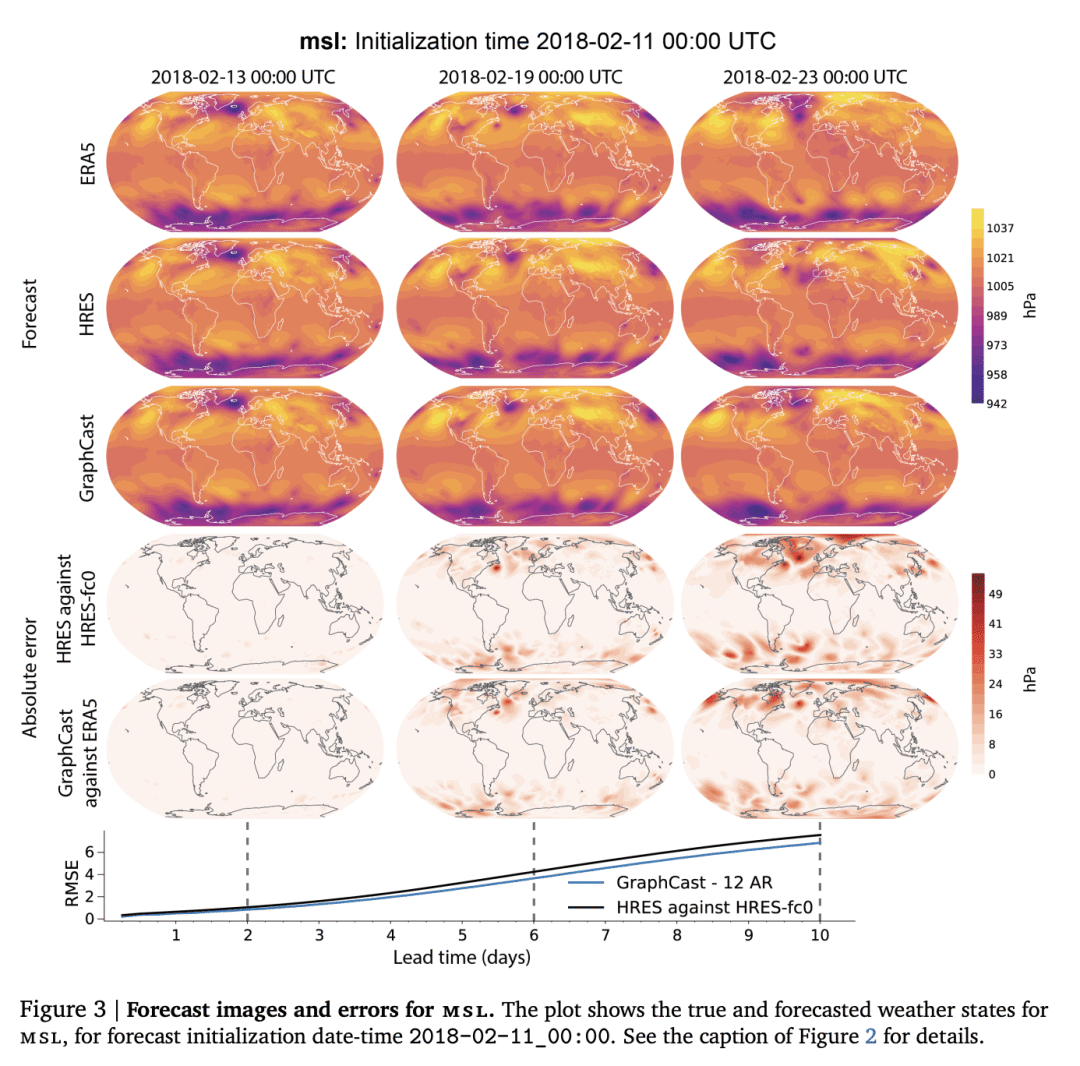来自今天的爱可可AI前沿推介
[LG] GraphCast: Learning skillful medium-range global weather forecasting
R Lam, A Sanchez-Gonzalez, M Willson, P Wirnsberger, M Fortunato, A Pritzel…
[DeepMind & Google]
GraphCast: 中期全球天气准确预报学习
要点:
-
GraphCast是一种自回归模型,基于图神经网络,性能优于世界上最准确的确定性和以机器学习为基础的天气预报系统; -
GraphCast可以在Cloud TPU v4硬件上在60秒内生成10天的预报(35GB数据); -
以机器学习为基础的预报随数据规模变化而变化,可以更快更准确地预报。
摘要:
本文提出一种基于机器学习(ML)的天气模拟器——GraphCast——其表现优于世界上最准确的确定性操作性中程天气预报系统,以及之前的所有机器学习基线。GraphCast是一个自回归模型,基于图神经网络和一种新的高分辨率多尺度网格表示,根据欧洲中期天气预报中心(ECMWF)的ERA5再分析档案中的历史天气数据进行了训练。它可以在0.25度经纬度网格上以6小时的时间间隔对5个表面变量和6个大气变量进行10天的预测,每个变量在37个垂直压力水平下,该网格对应于赤道的分辨率约为25x25公里。本文结果表明,在所评估的2760个变量和提前时间组合中,GraphCast比ECMWF的确定性操作预测系统HRES更准确。GraphCast在报告的252个目标中,99.2%的表现也优于之前最准确的基于机器学习的天气预报模型。GraphCast可以在Cloud TPU v4硬件上在60秒内生成10天的预测(35G数据)。与传统的预测方法不同,基于机器学习的预测可以很好地扩展数据:通过对更大、更高质量和更新的数据进行训练,预测技能可以提高。这些结果共同代表了在用机器学习补充和改进天气建模方面向前迈出的关键一步,为快速、准确的预测开辟了新的机会,并有助于实现物理科学中基于机器学习的模拟的承诺。
We introduce a machine-learning (ML)-based weather simulator--called "GraphCast"--which outperforms the most accurate deterministic operational medium-range weather forecasting system in the world, as well as all previous ML baselines. GraphCast is an autoregressive model, based on graph neural networks and a novel high-resolution multi-scale mesh representation, which we trained on historical weather data from the European Centre for Medium-Range Weather Forecasts (ECMWF)'s ERA5 reanalysis archive. It can make 10-day forecasts, at 6-hour time intervals, of five surface variables and six atmospheric variables, each at 37 vertical pressure levels, on a 0.25-degree latitude-longitude grid, which corresponds to roughly 25 x 25 kilometer resolution at the equator. Our results show GraphCast is more accurate than ECMWF's deterministic operational forecasting system, HRES, on 90.0% of the 2760 variable and lead time combinations we evaluated. GraphCast also outperforms the most accurate previous ML-based weather forecasting model on 99.2% of the 252 targets it reported. GraphCast can generate a 10-day forecast (35 gigabytes of data) in under 60 seconds on Cloud TPU v4 hardware. Unlike traditional forecasting methods, ML-based forecasting scales well with data: by training on bigger, higher quality, and more recent data, the skill of the forecasts can improve. Together these results represent a key step forward in complementing and improving weather modeling with ML, open new opportunities for fast, accurate forecasting, and help realize the promise of ML-based simulation in the physical sciences.
论文链接:https://arxiv.org/abs/2212.12794



内容中包含的图片若涉及版权问题,请及时与我们联系删除



评论
沙发等你来抢